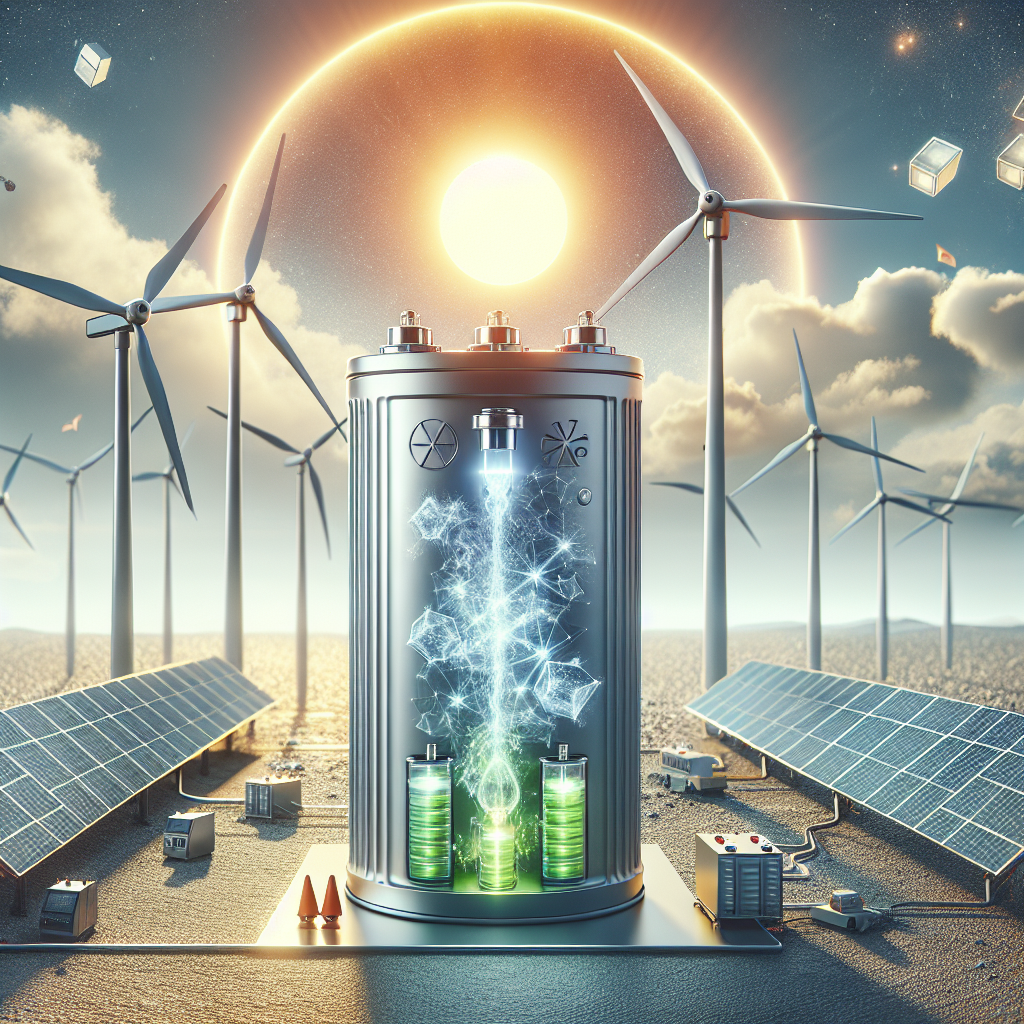Overcoming the Intermittency of Renewables through Energy Storage
In the quest for a sustainable and cleaner future, renewable energy sources like wind and solar power have become increasingly important. However, a significant challenge with these energy sources is their intermittency; the sun doesn’t always shine, and the wind doesn’t always blow. This variability can create mismatches between energy supply and demand. Fortunately, advancements in energy storage technologies offer promising solutions to this problem, enhancing the reliability and efficiency of renewable energy systems.
The Challenge of Intermittency
Renewable energy sources are inherently variable. Solar power generation peaks during the day, especially in sunny conditions, and drops off at night. Wind power can be highly unpredictable, with output fluctuating based on local wind conditions. This intermittency poses a challenge for integrating renewables into the power grid, which requires a constant balance between supply and demand to function properly.
Without effective methods to store excess energy and release it when needed, utilities must rely on fast-reacting fossil fuel plants to meet immediate energy demands, undermining the environmental benefits of renewable energy sources. Thus, addressing the intermittency of renewables is not just a technical challenge but also critical for achieving broader environmental and sustainability goals.
The Role of Energy Storage
Energy storage technologies provide a viable solution to the intermittency challenge by capturing energy when it is abundant and releasing it when demand exceeds supply. By acting as a buffer, storage systems can smooth out the variability of renewable energy sources, making them more reliable and predictable.
Types of Energy Storage
Several energy storage technologies are being developed and deployed to complement renewable energy sources:
1. Batteries: Lithium-ion batteries are the most well-known, offering high efficiency and energy density. They are increasingly used in both residential and grid-scale applications.
2. Pumped Hydro Storage: This is the most common form of large-scale energy storage, utilizing two water reservoirs at different elevations to store and generate power.
3. Thermal Storage: These systems store energy in the form of heat (or cold), which can be converted back into electricity or used directly for heating or cooling applications.
4. Flywheels: Flywheel systems store energy as rotational kinetic energy and can rapidly respond to energy demands, although they typically store energy for shorter durations.
5. Compressed Air Energy Storage (CAES): CAES systems store energy by compressing air in underground caverns, which can be released to generate electricity when needed.
Benefits of Integrating Energy Storage with Renewables
The integration of energy storage with renewable energy systems offers several benefits:
– Improved Grid Reliability and Stability: Storage can quickly respond to fluctuations in demand and supply, maintaining the balance required for grid stability.
– Increased Renewable Energy Utilization: By storing surplus energy, less renewable power is wasted, increasing the overall efficiency of renewable energy systems.
– Reduced Dependence on Fossil Fuels: With more reliable renewable energy sources, there’s less need for fossil fuel-based power plants to fill in the gaps, leading to lower greenhouse gas emissions.
– Economic Benefits: Energy storage can provide value through various services such as peak shaving, frequency regulation, and load leveling, potentially lowering energy costs for consumers.
Challenges and Future Perspectives
While energy storage offers a promising solution to the intermittency of renewables, there are still challenges to overcome. High costs, technological limitations, and the need for further research and development are among the key hurdles. However, as technology advances and economies of scale are achieved, the costs of energy storage are expected to decline, making it an increasingly viable option.
Governments and industry players are also recognizing the critical role of storage in enabling a clean energy transition, leading to supportive policies, incentives, and investments in research and development. As the energy storage market matures, it will play a pivotal role in overcoming the intermittency of renewables, paving the way for a more sustainable and resilient energy future.
FAQs
Q1: Can energy storage completely solve the intermittency issue of renewables?
A1: While energy storage significantly mitigates the intermittency problem by storing excess energy and supplying it when needed, it is not a complete solution. A diversified approach, including grid modernization and demand response strategies, is also necessary.
Q2: Are there environmental impacts associated with energy storage systems?
A2: Yes, different storage technologies have varying environmental impacts, including resource extraction for batteries and potential land use impacts for pumped hydro storage. However, these impacts are generally considered lower than those associated with fossil fuel energy sources.
Q3: How long can energy storage systems store energy?
A3: The duration varies widely among different technologies. For instance, pumped hydro and CAES can store energy for hours or even days, while batteries typically provide storage for minutes to several hours. The choice of technology depends on the specific application and needs.
Q4: Is energy storage economically viable?
A4: The economic viability of energy storage is improving rapidly as costs decline and technologies become more efficient. Furthermore, the value of energy storage extends beyond mere cost per kWh stored, as it provides grid services and reliability benefits that are increasingly recognized and compensated in energy markets.
Q5: What is the future of energy storage?
A5: The future of energy storage is closely tied to the expansion of renewable energy. As renewables constitute a larger share of the energy mix, the demand for storage will increase. Ongoing research and development are expected to lead to more efficient, affordable, and environmentally friendly storage solutions, making energy storage an integral part of the global shift towards sustainable energy.

